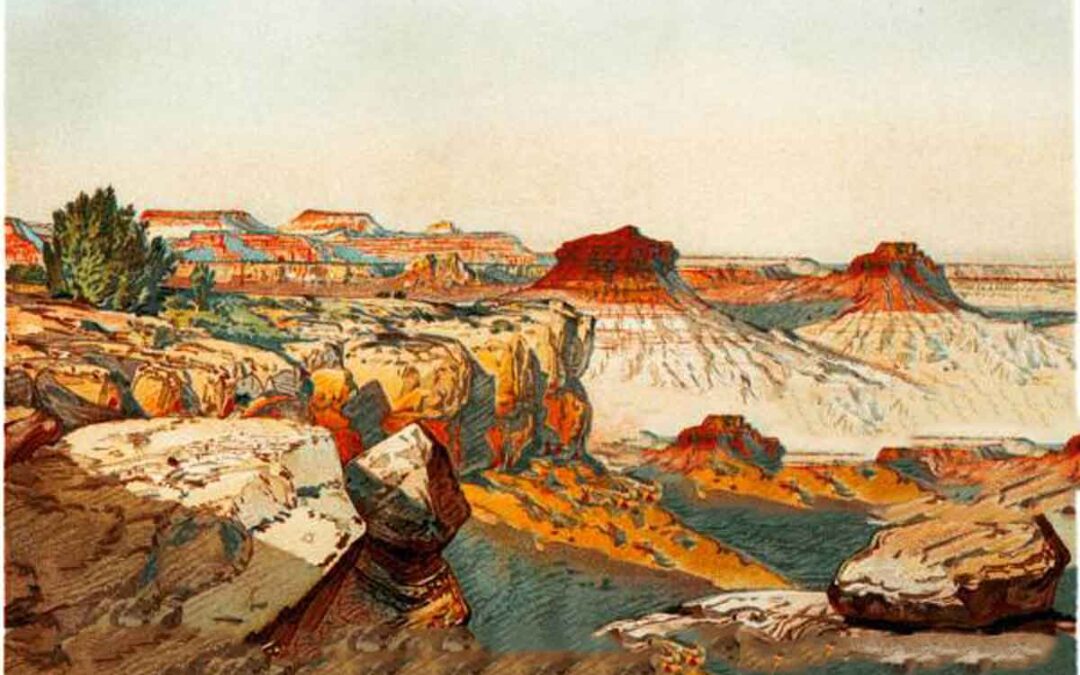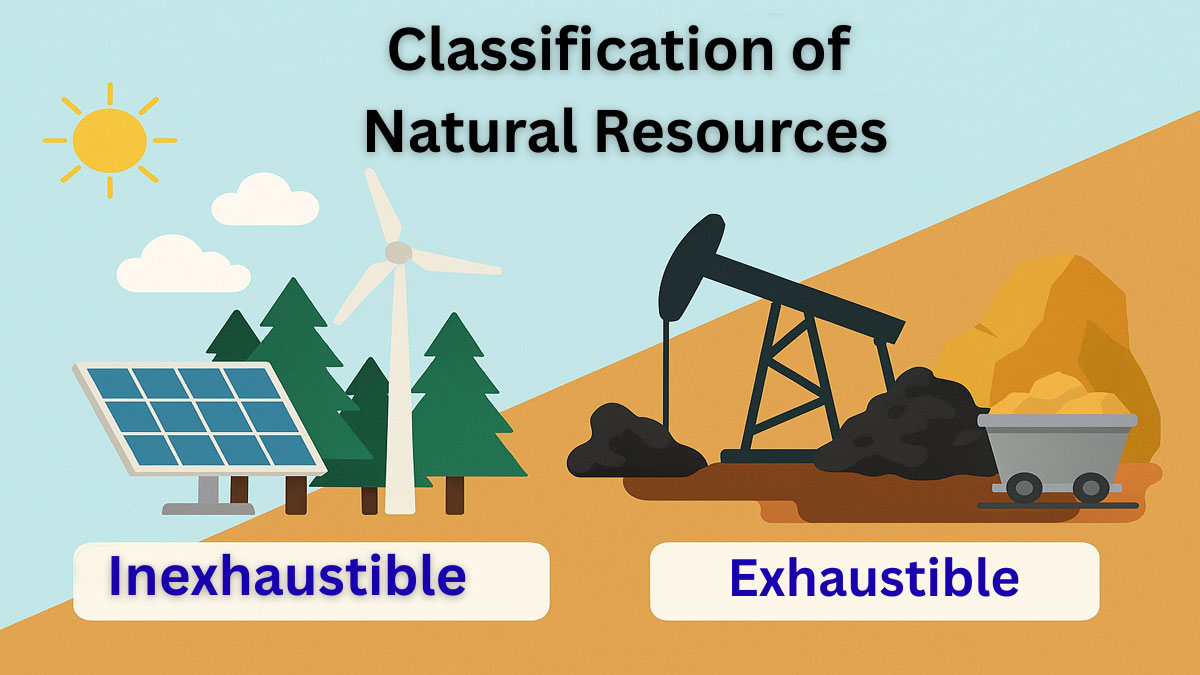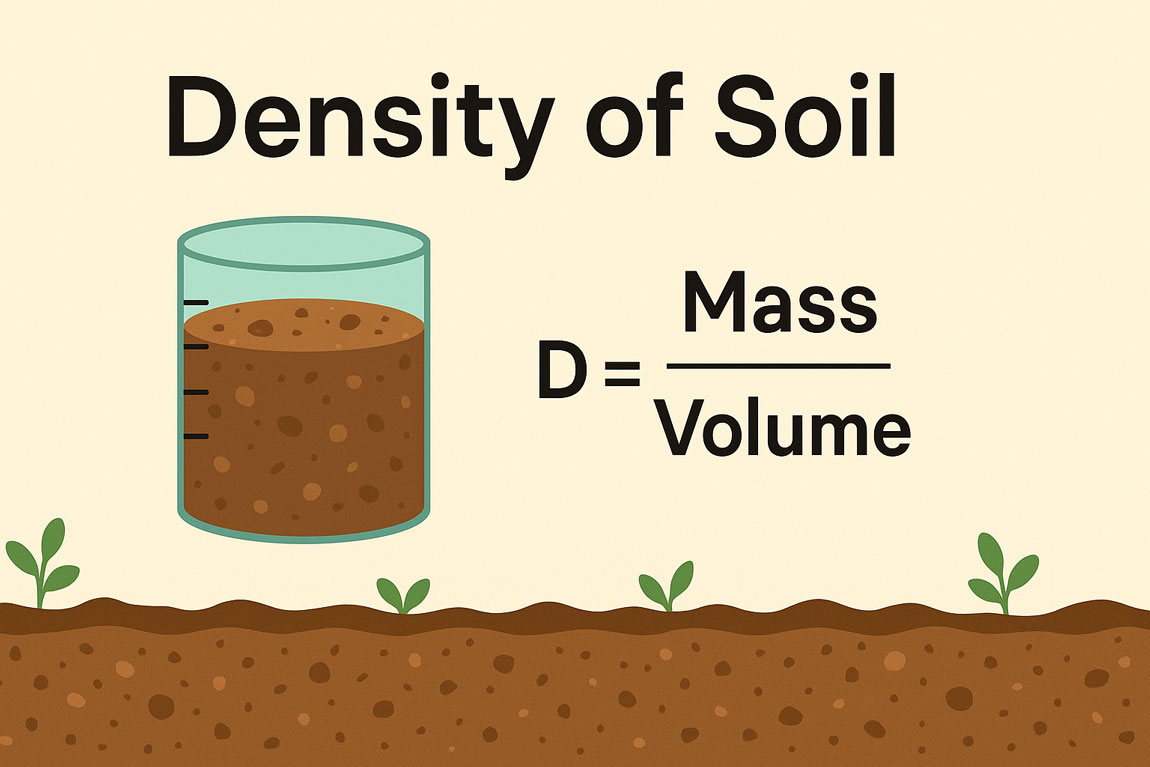Historical geology is, however, more than just a recitation of past events. It studies a dynamic planet that has changed continuously during the past 4.6 billion years. In addition to determining what occurred in the past, geologists are also concerned with explaining how and why past events happened.
It is one thing to observe in the fossil record that dinosaurs went extinct, but quite another to ask how and why they became extinct and, perhaps more importantly, what implications that holds for today’s global ecosystem.
Fundamentals of Historical Geology :
- Law of Uniformitarianism
- Law of Superposition
- Law of Faunal succession
- Age of the earth
- The Geological Time Scale
Law of Uniformitarianism:

The same natural processes we see operating today have always operated, and these everyday natural processes have shaped our world. He proposed that the same erosion, weathering, uplift, and sedimentation processes that are sculpting the land today have been at work throughout the eons.
This can explain the shape of the land we observe today. In Hutton’s day, uniformitarianism challenged theories that called upon catastrophic events like the biblical flood to explain how the world looked.
Catastrophism:
• Before Hutton’s work, Western cultures had generally accepted that the earth was about 6,000
years old
• People explained layers in rocks by referring to the biblical flood a few thousand years earlier.

Uniformitarianism:
Hutton argued that the world was unimaginably old and had no reason to predict its end.
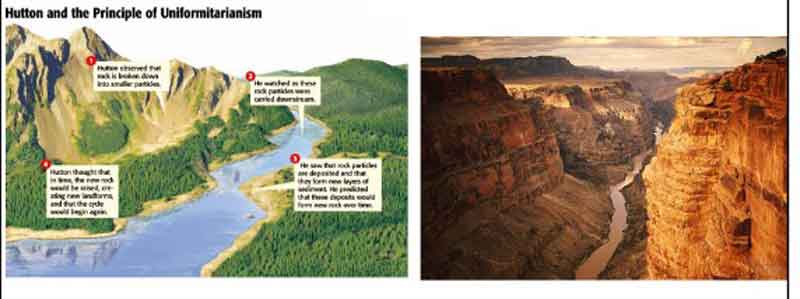
Hutton’s Rock Cycle:
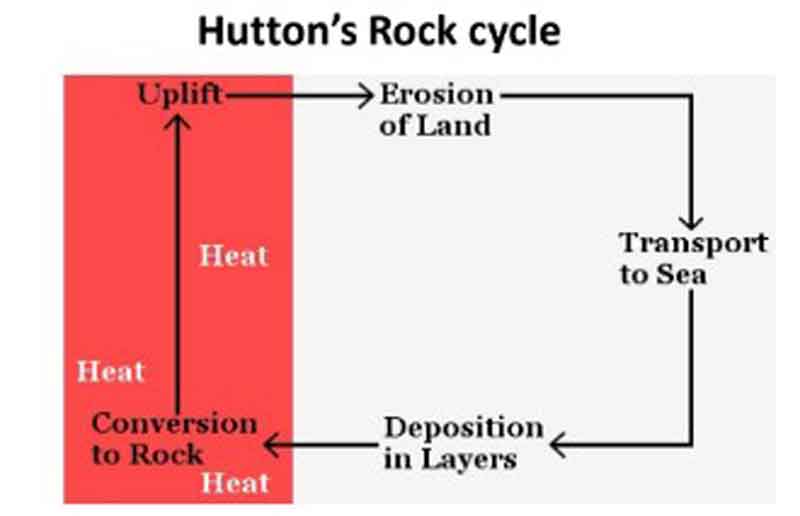
• Erosion of land by water and air creates materials such as silt, soil, and small rock particles, which are carried into the sea,
• Where layers of these materials are deposited over long time scales.
• As the layers gather, the earliest layers become buried ever more deeply in the earth, where they are turned into stone by the earth’s heat.
• Stone is eventually uplifted to form new land.
• The new land is eroded over a long period, beginning the cycle again.
Law of Superposition:
In a sequence of strata, any stratum is younger than the strata on which it rests and is older than the strata that rest upon it. “Nicholas Steno, 1669. This law assumes that the strata in question are not deformed significantly and are not overturned. Steno, in fact, proposed three more laws regarding strata.

Law of Faunal Succession:
William Smith used to work as a survey engineer. Surveying canal routes required detailed knowledge of the rocks through which the canal was to be dug, which led Smith to carefully examine the local rocks.
While doing this, Smith observed that the fossils found in a section of sedimentary rock were always in a particular order from the bottom to the top of the section. This order of appearance could also be seen in other rock sections, even those on the other side of England.
The law of faunal succession is based on the observation that sedimentary rock strata contain fossilized flora and fauna and that these fossils succeed each other vertically in a specific, reliable order that can be identified over wide horizontal distances.
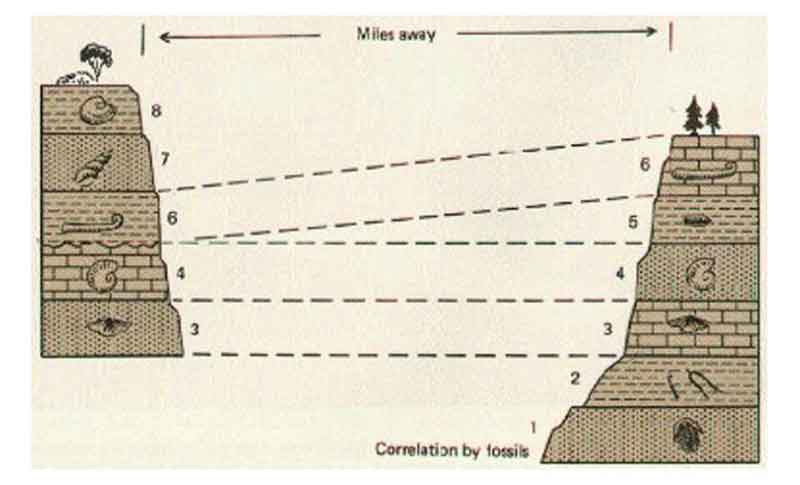
Age of the Earth:
The significance of the law of Uniformitarianism is that this law, for the first time, challenged the idea that the earth is very young, i.e., 6000 years old, as supposed because of religious biblical scriptures. The law instead proposed that the planet is enormously old, based on the notion that the natural processes we see today have continuously operated and that these processes have shaped our world. But James Hutton, who proposed the law, had no idea how old the earth is.
Calculating age of the age of the earth:
Age determined from total sedimentary thickness:
- The total sedimentary rock succession thickness was divided by the average sedimentation rate (mm/year). This calculation, done initially in 1860, gave the earth a three-million-year age. Later, the same calculation was repeated with revised and more accurate sedimentary thickness.
Age determined from the cooling of the earth:
- Lord Kelvin assumed that the earth was initially molten and calculated its age based on the cooling rate through conduction and radiation. This gave an age of 20 to 24 million years. At the time, it was unknown that the Earth had an internal heat source.
- John Jolly calculated the rate of salt delivery in the ocean and the total salt at the present time. The age of the earth is the total salt divided by the rate of salt addition to the sea. The age of the earth was calculated to be 90 to 100 million years.
- Henry Becquerel discovered radioactivity in 1896. A radioactive element is unstable and continues to change into a stable element. The rate of transformation is constant. For example, radioactive Uranium changes to lead, radioactive Rubidium changes to Strontium, and radioactive Potassium changes to Argon. An unstable radioactive isotope is called a parent, and the isotope resulting from decay is called a daughter product.
Half-Life:
The time required for half of the nuclei in a sample to decay is called the Half-life. Half-life is a common way of expressing the rate of radioactive disintegration. When the quantities of parent and daughter are equal (1:1), we know that one half-life is expired (Figure next page).
When one-quarter of the original parent atoms remain, and three-quarters have decayed to the daughter product, the parent/daughter ratio is 1:3, and we know that two half-lives have passed.
If the half-life of a radioactive isotope is known and the parent/daughter ratio can be determined, the age of the sample can be calculated.

Earth’s Oldest Rock:
Radioactive dating methods have produced thousands of dates for events in Earth’s history. Rocks exceeding 3.5 billion years of age are found on all continents, and Earth’s oldest rocks have been dated to a little more than 4 billion years.
Discovered in eastern Canada, these rocks may be the earth’s earliest crust. Rocks from western Greenland have been dated at 3.7 to 3.8 billion years. Radioactive dating has pointedly proven the idea of James Hutton and other early geologists that the earth is enormously old.
This method has also provided an accurate number of years for the earth’s oldest rock and estimated the earth’s age. From the above, we now know that the earth is about 4.5 billion years old.
Geologic Time Scale :
The geologic time scale is a framework used by geologists to arrange the history of the planets based on distinct time intervals. It references the history of life on Earth, geological events, and the ages of rock layers and rocks. The geologic time scale relies on the dating of the layers of rock.
This is done through radiometric dating, stratigraphy, and fossil correlation. Stratigraphy studies rock layers and their arrangement in the Earth’s crust. The layers of the rock are deposited over time, where young layers form at the top of old layers.
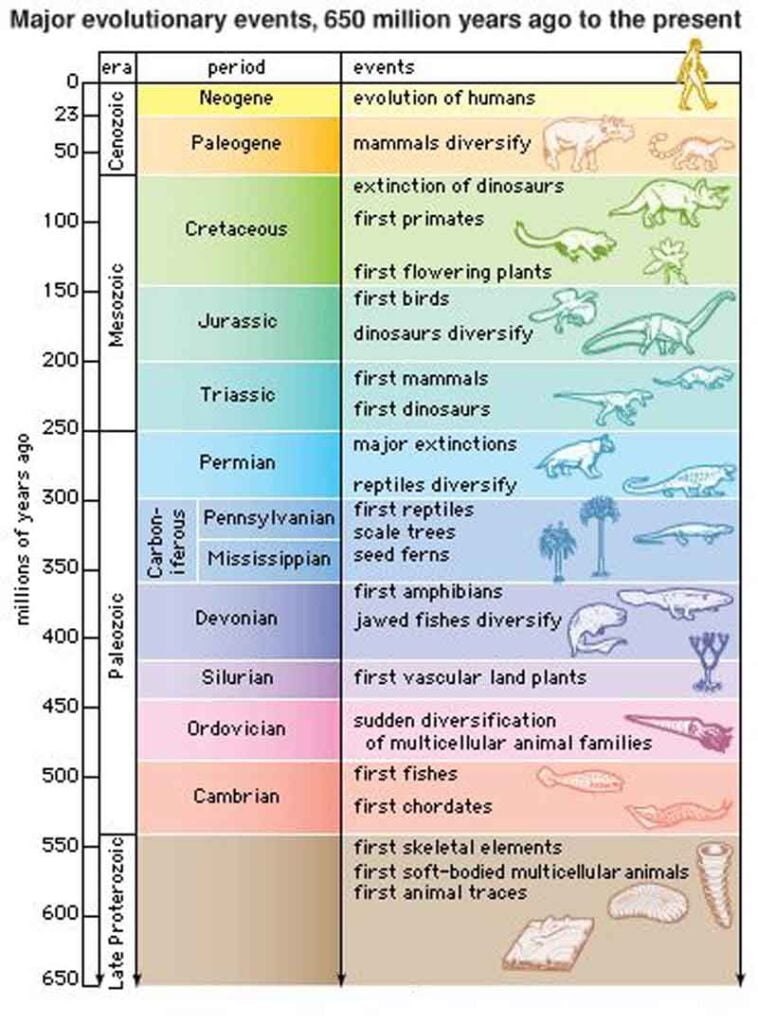
Conclusion :
Understanding the fundamentals of historical geology provides an important perspective on Earth’s evolution over millions of years. By studying Earth’s past, geologists can predict future changes and decipher the complex processes that shaped the planet’s surface. From ancient rock formations to plate movements, historical geology provides valuable insight into the natural forces that continue to influence our world.
By improving our knowledge of Earth’s history, we appreciate its enormous complexity and improve our ability to protect and preserve it for future generations.

